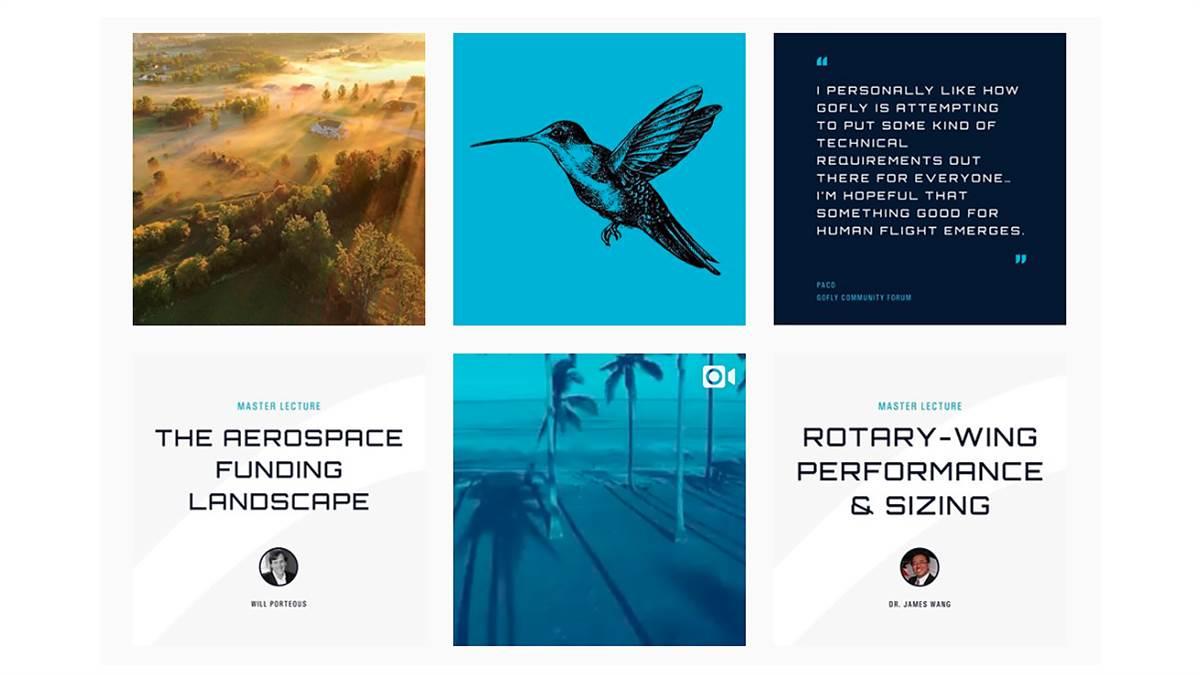Future of flight includes $2 million payout
GoFly Prize competition for personal flight underway
Design a safe, thrilling, and useful personal flying device and you could walk—or fly—away with a million-dollar reward. The first deadline for the GoFly Prize is April 18, when a written report and a preliminary drawing are due.

The two-year contest fosters the development of safe, quiet, ultra-compact, near-vertical-takeoff-and-landing (VTOL) personal flying devices capable of carrying a single person 20 miles.
GoFly Prize CEO Gwen Lighter told AOPA by telephone that she was encouraged by the number of entries and the amount of interest in those rushing to design a personal flight device that could shape the future of transportation.
Forming teams was encouraged to help foster free thinkers as they brainstorm to build the future of flight.
Boeing Co. is the grand sponsor, and AOPA is a partner in support of the global competition.
Lighter explained that the first deadline includes 10 prizes worth $20,000 each but stressed that entrants are not required to participate in Phase I to join the competition for Phase II, which is a VTOL demonstration with a March 28, 2019, deadline and four $50,000 prizes. Phase III is a final fly-off scheduled for Oct. 1, 2019, worth $1 million and judged by aviation experts and others looking for the best combination of speed, noise, and size.
Teams will have exclusive access to webinars that include discussions and Q&A sessions with global aviation leaders and one-on-one mentorship guidance. Masters and mentors include representatives from Boeing, Lockheed-Martin Skunk Works, Flight Safety Foundation, the University of Maryland, the British Ministry of Defence, and more.
“We have a very robust master and mentor platform,” said Lighter, who encouraged anyone over 18 years old to consider joining the project. “GoFly allows them to not only create the future, but to learn from—and work with—the best minds in aerospace today,” said Lighter.
She said about 80 universities are participating in the project, and there are plans to bring a future aspect of the GoFly initiative to high school students. “We will be launching several STEM [science, technology, engineering, and math] competitions for the younger crowd within the next year.”
AOPA’s You Can Fly initiatives recognize the importance of building the pilot community through programs that include high school learning curriculum, flying clubs, Rusty Pilots seminars, and other pilot-support mechanisms that make flying safe, fun, and affordable.
Lighter explained that the time was right for future flight innovation because of the “convergence of breakthrough technology that makes this a moment of achievable innovation.” She cited increased performance from batteries and capacitors, advances in the economy, control and stability systems, innovations in the drone world, 3-D printers, and rapid fabrication as foundations for the competition.
“When you put it all together, what it means is that for the first time we have the ability to make personal flight a reality,” she said.



